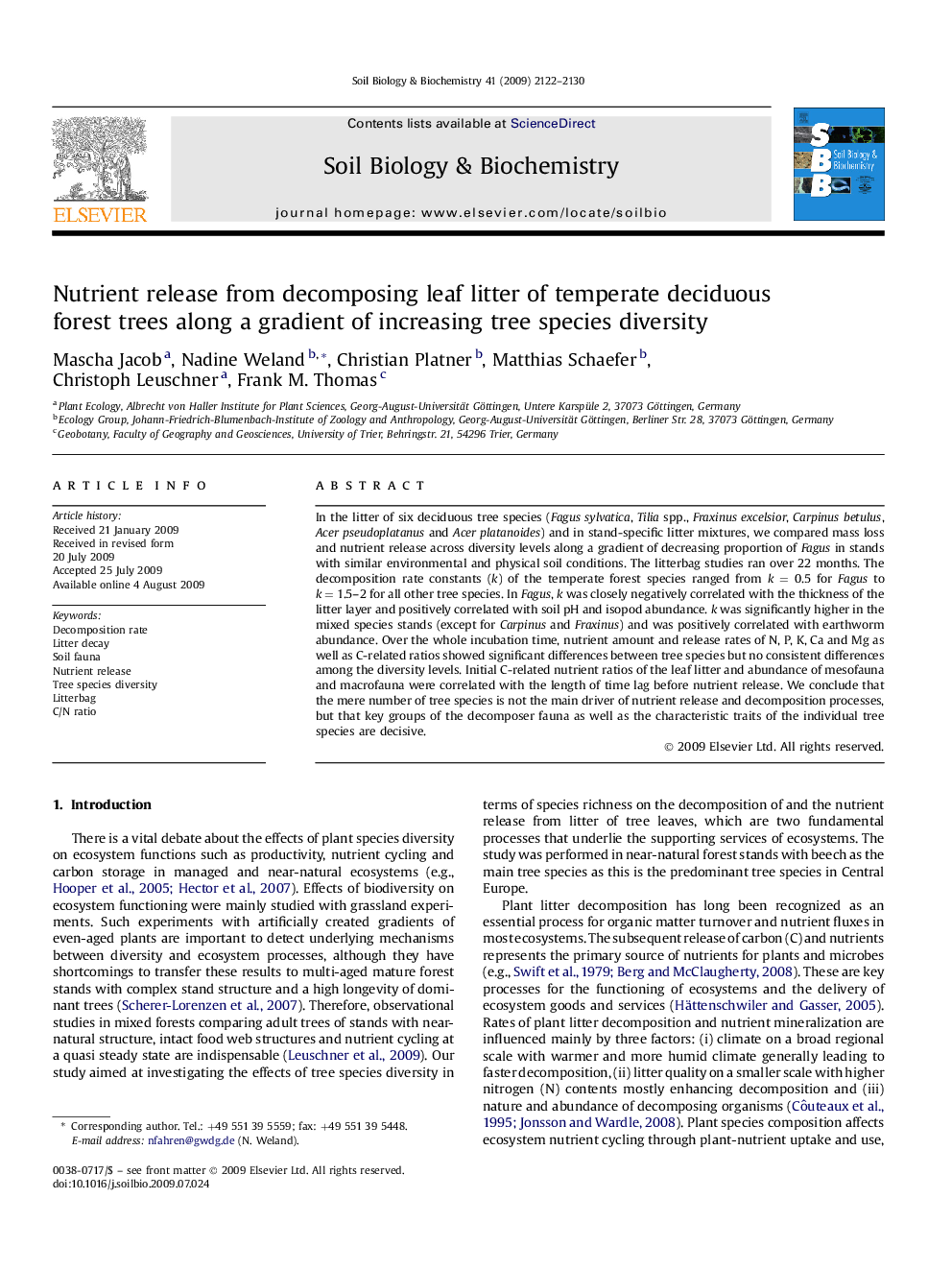| Article ID | Journal | Published Year | Pages | File Type |
|---|---|---|---|---|
| 2025977 | Soil Biology and Biochemistry | 2009 | 9 Pages |
In the litter of six deciduous tree species (Fagus sylvatica, Tilia spp., Fraxinus excelsior, Carpinus betulus, Acer pseudoplatanus and Acer platanoides) and in stand-specific litter mixtures, we compared mass loss and nutrient release across diversity levels along a gradient of decreasing proportion of Fagus in stands with similar environmental and physical soil conditions. The litterbag studies ran over 22 months. The decomposition rate constants (k) of the temperate forest species ranged from k = 0.5 for Fagus to k = 1.5–2 for all other tree species. In Fagus, k was closely negatively correlated with the thickness of the litter layer and positively correlated with soil pH and isopod abundance. k was significantly higher in the mixed species stands (except for Carpinus and Fraxinus) and was positively correlated with earthworm abundance. Over the whole incubation time, nutrient amount and release rates of N, P, K, Ca and Mg as well as C-related ratios showed significant differences between tree species but no consistent differences among the diversity levels. Initial C-related nutrient ratios of the leaf litter and abundance of mesofauna and macrofauna were correlated with the length of time lag before nutrient release. We conclude that the mere number of tree species is not the main driver of nutrient release and decomposition processes, but that key groups of the decomposer fauna as well as the characteristic traits of the individual tree species are decisive.
